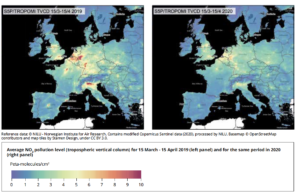Better air quality has led to a significant reduction of premature deaths over the past decade in Europe. However, the European Environment Agency’s (EEA) latest official data show that almost all Europeans still suffer from air pollution, leading to about 400,000 premature deaths across the European continent.
The EEA’s ‘’ shows that only six Member States exceeded the European Union’s limit value for fine particulate matter (PM2.5) in 2018: Bulgaria, Croatia, Czechia, Italy, Poland, and Romania.
Only four countries in Europe (Estonia, Finland, Iceland, and Ireland) had fine particulate matter concentrations that were below the World Health Organization’s (WHO) stricter guideline values.
The EEA report notes that there remains a gap between the EU’s legal air quality limits and WHO guidelines, an issue that the European Commission seeks to address with a revision of the EU standards under the Zero Pollution Action Plan.
The measures implemented at the national level have addressed the whole set of emissions sectors, for example:
- road traffic: low-emission zones, switching to cleaner public transport such as low-emission buses or trams, promoting cycling and walking, car‑sharing schemes, lowering speed limits, and issuing congestion charges;
- residential heating: expanding district heating, using cleaner fuels for heating, reducing energy use via insulation of buildings, use of energy certification system/labeling;
- inland shipping;
- industry: implementation of the requirements of the Integrated Pollution Prevention and Control (IPPC) Directive;
- construction and demolition activities, including emissions from non-road mobile machinery.
EU, national and local policies and emission cuts in key sectors have improved air quality across Europe, the EEA report shows. Since 2000, emissions of key air pollutants, including nitrogen oxides (NOx), from transport have declined significantly, despite growing mobility demand and the associated increase in the sector’s greenhouse gas emissions. Pollutant emissions from energy supply have also seen major reductions while progress in reducing emissions from buildings and agriculture has been slow.
Sourde: EEA

